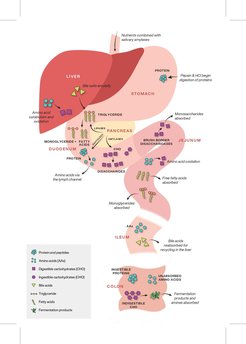‘Dietary Depths’: In the Search for Past Hominin Diets New Study Shows How Biochemical Methods Can Yield Important Insights
A publication in the journal Bioscience provides a guide on how to best use stable isotope ratios of single amino acids to determine past hominin dietary behaviors.
Understanding hominin diets and environments has long been a goal of paleoanthropological and archaeological research. In deep time contexts, there have been major debates as to how much an increase in meat consumption set the hominin clade apart from the lineages of our closest great ape relatives, as well as how the diets of our own species differed from our closest hominin relatives. On more recent timescales, examining our ancestors’ diets has great value for exploring the potential social, economic, and political ramifications of the emergence of food production and urbanism.

Much of what we know about past hominin diet and nutrition comes from the examination of excavated artefacts, including past plant and animal remains. Since the 1970s, however, stable carbon and nitrogen isotope analyses of hominin tissues have also yielded important insights. The ratios of carbon and nitrogen stable isotopes vary naturally in the food we eat before becoming incorporated into our bodily proteins. Measurement of these proteins can then be used to study dietary preferences of an individual during the time of tissue formation. However, the prevailing method of analyzing bulk proteins can be confounded by environmental variation and difficulties in ruling out different types of food.
In this new review, the Max Planck Institute for the Science of Human History evaluates how stable isotope analysis of single amino acids, the building blocks of proteins, can take research a step further in exploring paleodiets. Amino acids are valuable dietary markers because each of them has unique metabolic functions and properties.
“Thanks to improved analytical tools and a plethora of new isotope data, we are refining our ability to decode the dietary and nutritional information hidden within the individual amino acids,” says Thomas Larsen, the lead author of the paper and Biochemistry group leader at the MPI Science of Human History. The stable isotope ratios of individual amino acids can look at questions of trophic level independent of environmental context. The multitude of data they provide can also be placed into statistical models to explore new resolution of food sources.”
This advancement makes it possible to obtain direct evidence for the dietary flexibility and adaptiveness that has characterized our own species.

“This powerful tool is well-suited for examining the main dietary resources people used in their environment, and can identify shifts in economic strategies across space and time,” notes Dr. Patrick Roberts, last author and independent research group leader at the MPI Science of Human History. “Importantly, the study of individual amino acids makes it possible to begin to get past some uncertainties that can often affect dietary interpretations from bulk isotope data alone.”
The authors hope that the new paper can make this promising approach more broadly accessible to researchers who seek to delve into new depths in the study of dietary composition at a variety of career stages and from a variety of methodological and academic backgrounds. However, more studies and method development are needed to advance stable isotope ratios of individual amino acids.
“The method is still cost prohibitive and we need more standard materials to improve data comparability across labs,” adds Larsen, “but we are on track to expand the toolbox for reconstructing past hominin diets.”

